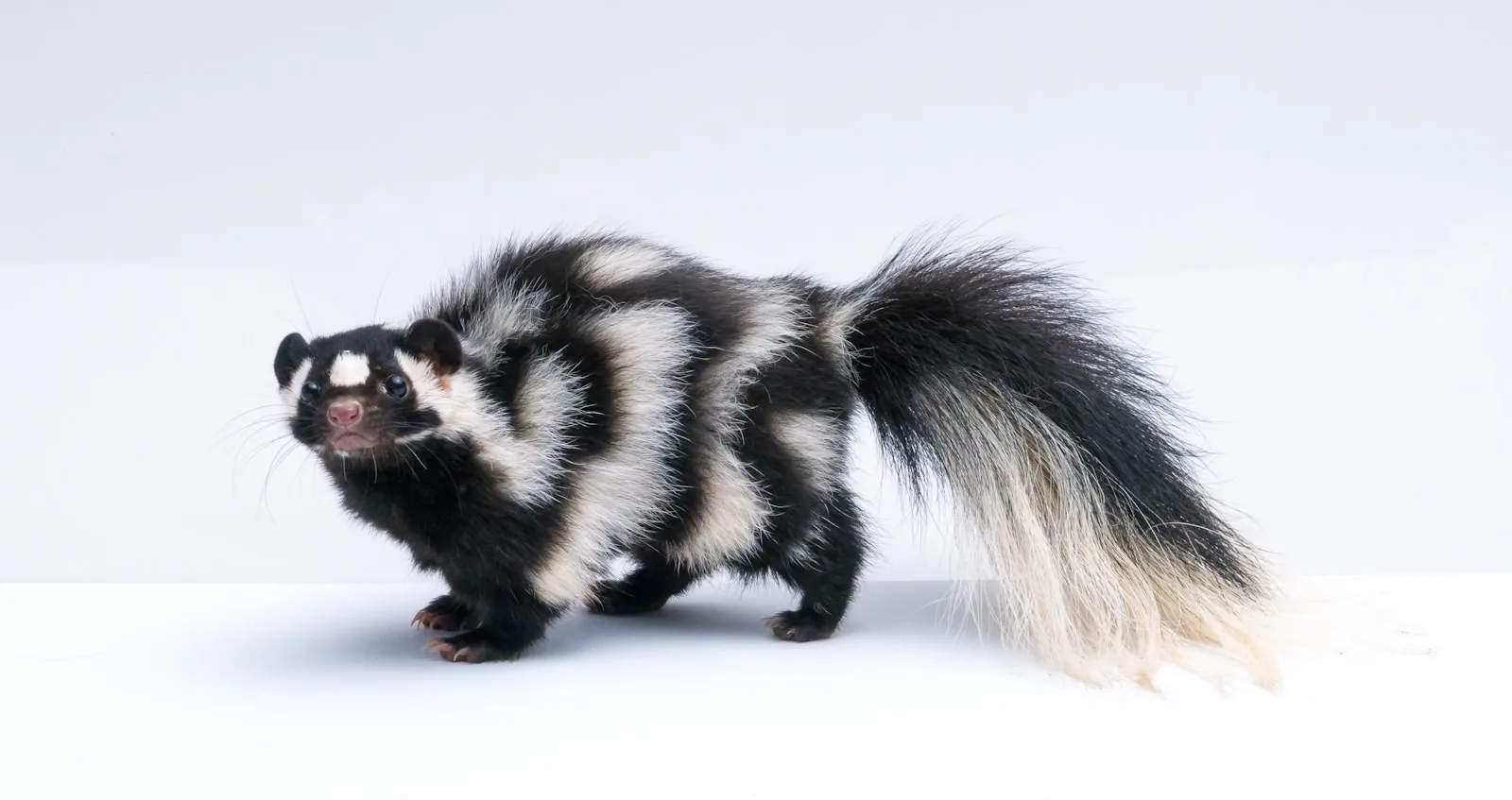
Table of Contents
Although skunks are well known for their strong smell, these striped creatures are much more complex than meets the eye. Skunks have many fascinating characteristics that set them apart from other animals, from their unusual defense mechanisms to their unexpected habits.
Let’s take a look at 13 surprising skunk facts that will change your perspective on these misunderstood critters!
Distinctive Defense Mechanism

When confronted, skunks are known for their powerful defense mechanisms, which include spraying an unpleasant-smelling liquid. This poisonous spray can irritate and annoy both curious bystanders and predators up to ten feet away.
Variety of Species

There are other skunk species, such as the hog-nosed skunk and the spotted skunk, though most people are only familiar with the striped skunk. Each species differs from the others due to its own characteristics and behavior patterns.
Omnivorous Appetite

Skunks have a varied diet that includes insects, small animals, birds, eggs, fruits and leaves. They are opportunists. Their flexible feeding patterns enable them to thrive in a variety of settings, including cities and grasslands as well as forests.
The post 15 Not-So-Stinky Facts About Skunks
Nocturnal Creatures

Because of their nocturnal nature, these furballs are mostly active at night. Their lifestyle aids in their ability to avoid predators and forage for food at night, when they are least likely to be noticed.
Excellent Diggers

Skilled diggers, skunks frequently excavate underground tunnels or hollow logs. With their powerful claws, they can dig cozy nests where they sleep and raise their young all day.
Mating Season

The animal mates in late winter or early spring, when females give birth to kits, which are litters of up to ten offspring. Skunks use their mating season, characterized by rituals and dominant males competing for females, as a critical period.
Caring Mothers

Until the kits mature on their own, female skunks usually raise their young in the immediate family. A mother skunk during this time imparts important survival skills to her young, such as finding food and avoiding predators.
Solitary Lifestyle

Skunks are usually solitary animals most of the year, however they may live in family groups during mating season. With the exception of mating season, they usually remain isolated from other skunks and use scent glands to mark their territory.
Hibernation Patterns

When they are in torpor, their metabolic rate slows down and they become less active to conserve energy until things improve. Although they don’t actually hibernate, skunks can go into a state of torpor when there is extreme cold or a lack of food.
Natural Pest Control

They are important in managing insect populations because they feed on insects including grasshoppers, beetles and grubs. Their predilection for insects helps keep their habitats ecologically balanced and reduces crop pests.
Adaptable Habitat

Skunk’s greatest asset is their adaptability. It can grow in a variety of environments, including urban areas, grasslands, forests, and deserts. Skunks are found near water sources and in areas with abundant food and shelter.
READ | Top 16 Animals That Are Most Afraid Of Rattlesnakes
Vocal Communication

Although skunks are not known for their vocalizations, they use a variety of vocalizations to communicate with each other. They may use these sounds, which include hissing, screeching, and grunting, to ward off predators or signal that they are ready to mate.
Effective Warning Signs

Skunks emit several warning signals before releasing their repulsive odor. In an attempt to avoid conflict, they express their intent to ward off any threat by raising their bushy tails, drawing their legs and arching their backs.
READ | The Mystery of Cleopatra’s Tomb: 7 Unknown Facts


1 thought on “13 Skunk Facts That Aren’t So Gross”